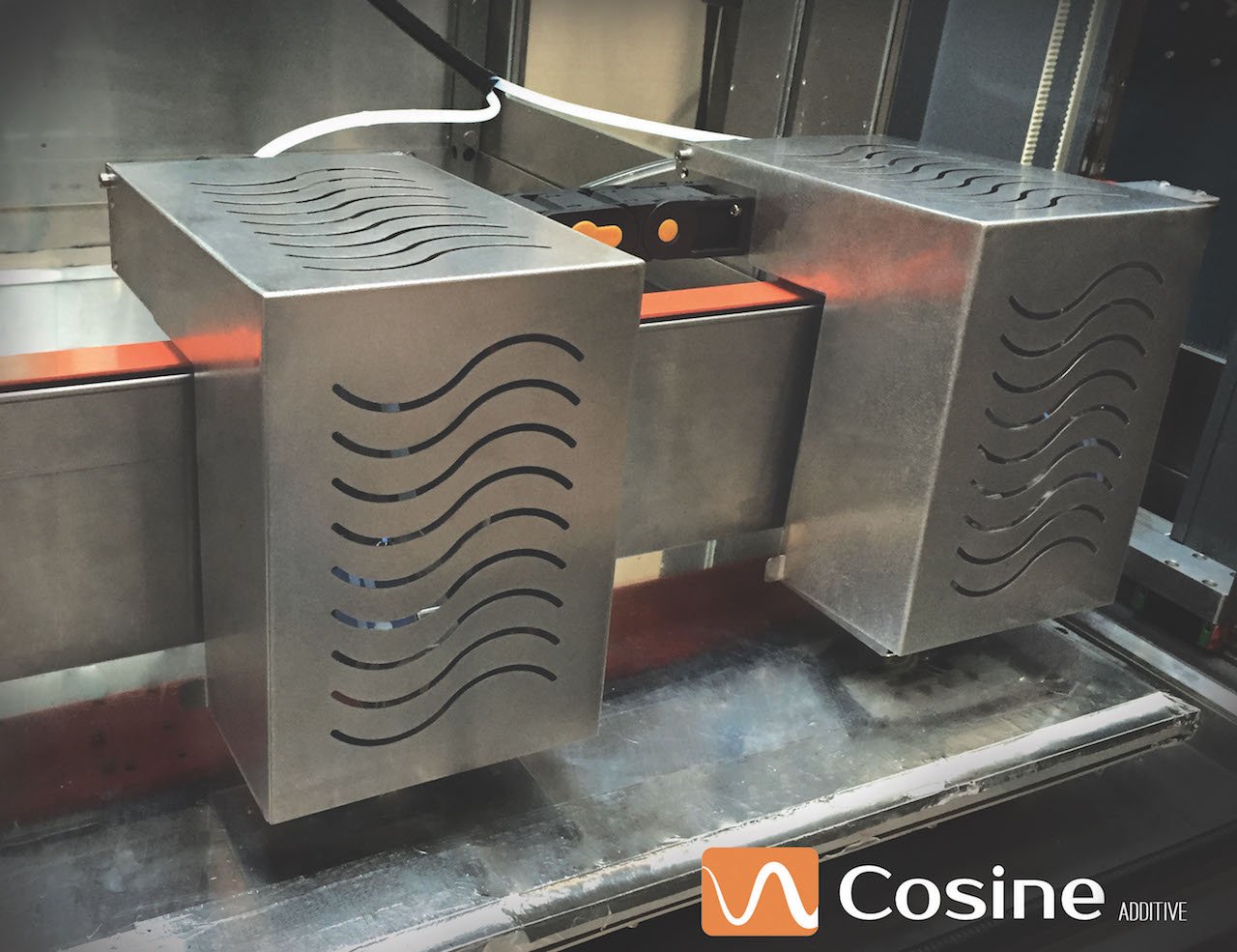
Large-format 3D printer manufacturer Cosine Additive has developed a powerful new feature that they call “Tandem” printing.
The idea has been used in a few other machines, but it essentially involves having two independently operating extruder / toolheads. Unlike so-called “dual extruders” that are fixed to each other and move in the exact same print path, independent extruders can trace different paths at the same time.
Another machine offering this capability is the Kloner3D “240Twin”, which has had this capability for around a year now.
The benefit of this approach is to leverage the notion that 3D prints are often occupying only a small portion of the build surface. If the remaining portion could be used for a print, then significant time savings could be had: two different prints taking place at the same time.
That’s what Cosine Additive has described in a press release. They explain:
Cosine Additive has announced details regarding their AM1 Printer’s now-available Tandem Extruder option. The innovative feature gives operators the ability to create two identical prints simultaneously. This maximizes a single machines manufacturing throughput while minimizing the amount of time and manufacturing floor space it requires.
It’s also available as an upgrade to existing machines.
While the independent dual extruder concept has been implemented previously, I think Cosine Additive has hit a particularly useful capability when combined with their machine.
But first a recap of the Cosine Additive machine, which we profiled here last year.
The AM1 is a large format extrusion-based 3D printer, with a whopping build volume of 1100 x 850 x 900mm. While there are a couple of alternative machines of this volume, the key feature of Cosine Additive’s AM1 is that it is a closed-box where the environment is controlled. This means it is fully capable of printing a wide variety of experimental plastics that might otherwise be impossible to print on other open-style large format machines.
To put it in perspective, many large format machines can only print PLA plastic. Not so with the AM1.
Now, combine this machine with tandem printing and a couple of interesting things happen.
First, you double the throughput. On a very large machine like this, there will very often be cases where large amounts of the build surface are unused, much more than when using a small-format device. Now that capacity becomes more useful.
Secondly, Cosine Additive points out a very interesting capability that’s enabled by their closed-box system:
The Tandem Extruder feature also simplifies the entire trial and error process of discovering the best possible material for a print for a specific application. Cosine’s Tandem Extruder can create two copies of the same exact structure using 2 different filaments as long as they are of similar melting points. Users can easily compare the different strengths, flexibilities, weights, and overall qualities of different materials to decide which best fits their printing needs.
Customers can then ramp up part production on the tandem extruder once a material is selected cutting the cost of the part in half. Although Cosine Additive is not the first to create a 3D printer with a Tandem Extruder option, they are the only company that offers this option for use on such a large scale machine.
I’d say this is a very innovative approach, one that should be a standard feature on any 3D printer.
Via Cosine Additive

